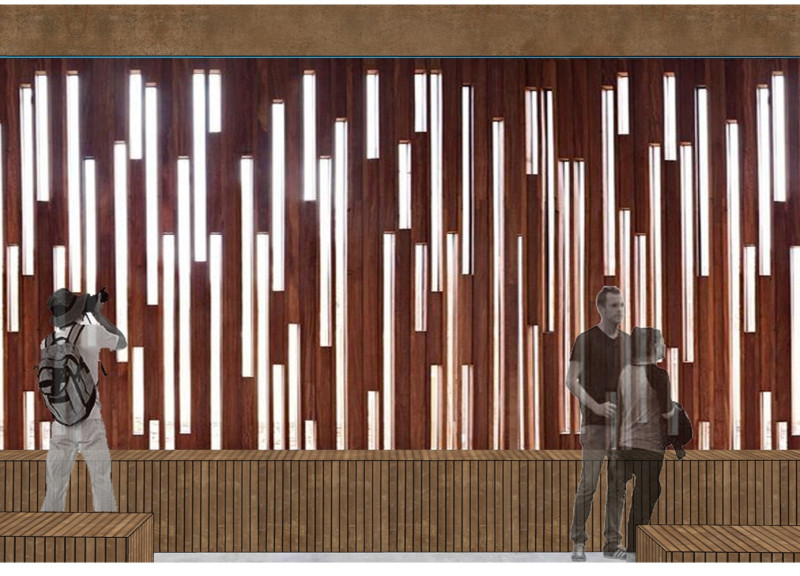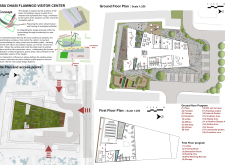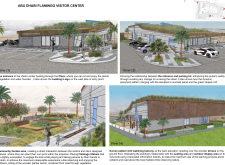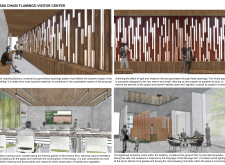5 key facts about this project
The Abu Dhabi Flamingo Visitor Center is located in an ecological landscape that invites visitors to connect with nature. It emphasizes the local bird population and serves as both an educational hub and a recreational space. The design is inspired by the shape of birds, particularly their wings. This concept manifests through two main building forms linked by a central corridor that guides movement throughout the facility.
Design Concept
The structure takes on the form of two masses, symbolizing bird wings. Connected by a dynamic corridor, this design encourages visitors to move fluidly between various spaces. It prioritizes the experience of being in nature, integrating the building into its ecosystem. The thoughtful layout supports the idea that architecture can enhance one’s appreciation of the natural world.
Spatial Organization
Inside, the visitor center is organized to promote interaction and exploration. The ground floor includes a plaza, a fountain, and areas for dining and shopping, while also featuring an internal garden and a community garden. This arrangement allows visitors to easily navigate between spaces, encouraging them to enjoy leisure and learning in a natural setting.
Sustainable Features
A green roof plays an essential role in the design. It slopes gently into the surrounding landscape and is planted with drought-resistant grasses. This feature helps manage rainwater and contributes to regulating temperatures around the building. Elevated above a landscaped area, the structure’s mass is designed to minimize visual impact, allowing the environment to remain a focal point.
Visitor Engagement
The layout includes balconies, terraces, and seating areas that take advantage of scenic views. These spaces are designed to bring people closer to their surroundings, making it easier to appreciate the local ecology. The exterior features concrete panels that blend with the landscape, providing an inviting environment for all who visit.
The design elements come together to create a location where nature and architecture coexist harmoniously, fostering an atmosphere of engagement and learning.






















































